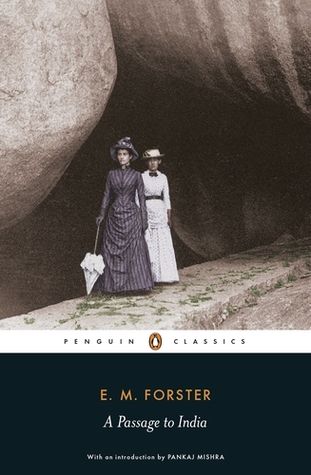A Passage to India
When Adela Quested and her elderly companion Mrs Moore arrive in the Indian town of Chandrapore, they quickly feel trapped by its insular and prejudiced 'Anglo-Indian' community. Determined to escape the parochial English enclave and explore the 'real India', they seek the guidance of the charming and mercurial Dr Aziz, a cultivated Indian Muslim. But a mysterious incident occurs while they are exploring the Marabar caves with Aziz, and the well-respected doctor soon finds himself at the centre of a scandal that rouses violent passions among both the British and their Indian subjects. A masterly portrait of a society in the grip of imperialism, A Passage to India compellingly depicts the fate of individuals caught between the great political and cultural conflicts of the modern world.
'That Marabar Case' was an event which threw the city of Chandrapore into a fever of racial feeling. Miss Quested, on a visit from England to the man she expected to marry, showed an interest in Indian ways of life which was frowned upon by the sun-baked British community. She returns, alone and distressed, from an excursion to the caves in the company of a young Indian doctor. He is arrested on a charge of attempted assault, but when the case comes to trial Miss Quested withdraws her accusation and the doctor is set free. Was she the victim of an hallucination, a complex, an unidentified intruder, or what?
In this dramatic story E.M. Forster depicts, with sympathy and discernment, the complicated Oriental reaction to British rule in India, and reveals the conflict of temperament and tradition involved in that relationship.
| Author | E. M. Forster |
|---|---|
| Publisher | Penguin Books |
| Place | London |
| Year | 2002 |
| ISBN | 9780141441160 |
| Binding | Paperback |
| Condition | Good |
| Comments | Some pages have pencil underlining |
How we describe the condition of our books
We are very proud of the condition of the books we sell (please read our testimonials to find out more!)
New: Exactly as it says.
As New: Pretty much new but shows small signs of having been read; inside it will be clean without any inscriptions or stamps; might contain a remainder mark.
Very Good: Might have some creases on the spine; no hard cracks; maybe slight forward lean and short inscription inside; perhaps very minor bumping on the corners of the book; inside clean but the page edges might be slightly yellowed.
Good: A few creases on the spine, perhaps a forward lean, bumping on corners or shelfwear; maybe an inscription inside or some shelfwear or a small tear or two on the dustjacket; inside clean but page edges might be somewhat yellowed.
Fair: In overall good condition, might have a severe forward lean to the spine, an inscription, bumping to corners; one or two folds on the covers and yellowed pages; in exceptional cases these books might contain some library stamps and stickers or have neat sticky tape which was used to fix a short, closed tear.
Poor: We rarely sell poor condition books, unless the books are in demand and difficult to find in a better condition. Poor condition books are still perfect for a good read, all pages will be intact and none threatening to fall out; most probably a reading copy only.


